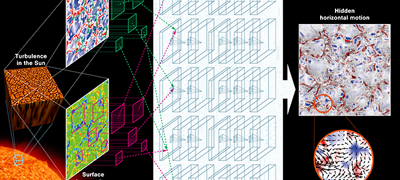Research Report2022

Mitigating corrosion by liquid tin could lead to better cooling in fusion reactors
Researchers at Tokyo Institute of Technology and the National Institute for Fusion Science have clarified the chemical compatibility between high temperature liquid metal tin (Sn) and reduced activation ferritic martensitic, a candidate structural material for fusion reactors. ...

Development of high-time-resolution measurement of electron temperature and density in a magnetically confined plasma
:A powerful tool for understanding transient plasma physics phenomena
Fusion power generation uses the energy generated by fusion reactions in high-temperature plasma. ...

The process of waves carrying plasma heat is observed for the first time in the world
In fusion power generation, it is essential that the high-energy particles generated by a fusion reaction in hot plasma heat it to sustain further fusion reactions. ...

Discovery of high-speed moving plasma turbulence for the first time in the world
In order to achieve a fusion power plant, it is necessary to stably confine a plasma of more than 100 million degrees Celsius in a magnetic field and maintain it for a long time. ...

Successful improvement of plasma thermal insulation layer with deuterium
In order to achieve nuclear fusion power generation, it is necessary to confine the plasma in a magnetic field and to make the center of the plasma hotter than 100 million degrees Celsius.・・・

Plasma turbulence spreading by magnetic fluctuation reduces heat load on a fusion device wall
A research group led by Associate Professor Masahiro Kobayashi of the National Institute for Fusion Science (NIFS) has discovered that in the Large Helical Device (LHD), ...

Cooling a plasma of 100 million degrees by ice pellet – Emergency plasma shutdown system in ITER
The Large Helical Device has performed a new experiment that injected ice pellets made of neon, which are planned to be used by the emergency shutdown system in ITER. ...

Improvement of ICRF Antenna Performance with Impedance Transformers
The Large Helical Device (LHD) is equipped with two types of antennas for Ion Cyclotron Range of Frequencies (ICRF) heating. One is the high-power-oriented antenna called the FAIT antenna, and the other is called the HAS antenna, where the wavenumber parallel to the magnetic field lines can be controlled. ...

Experimental and Theoretical Verification of Atomic Physics Effects Specific to Highly Charged Heavy Ions
We have investigated atomic number (Z) dependence of transition wavelengths of gallium-like lanthanide ions, based on spectroscopic measurements in the Large Helical Device (LHD) and an electron beam ion trap (EBIT). A peculiar Z dependence of the wavelength was found between Z=62 and 63. ...

Investigating plasma transport with a hollow temperature profile by heat pulse propagation
Heat transport in fusion plasmas is often modeled as a temperature gradient. In contrast, when a narrow region away from the plasma center is heated to create a plasma with a peculiar hollow temperature profile, and then a narrow region near the center is additionally heated, a transient phenomenon was observed in which the heat pulse propagates against the temperature gradient. ...

Self-sustained divertor oscillation mechanism identified in fusion plasma experiment
To harness the forces that power the Sun to produce substantial clean energy on Earth, researchers heat fuel to such a high temperature that atoms melt into electrons and nuclei to form a hot, ...

Deep Neural Network to Find Hidden Turbulent Motion on the Sun
A research group led by the National Astronomical Observatory of Japan (NAOJ), the National Institute for Fusion Science (NIFS), ...

Control of plasma particles by powerful vacuum pumping
In plasma experiments in the Large Helical Device (LHD), we discovered that the controllability of plasma particles can be improved by compressing fuel particles in a region called the divertor and by pumping them out strongly with a cryogenic vacuum pump. ...

Boron powder injection makes plasma temperature increase
In order to realize fusion power generation, it is necessary to maintain a high-temperature plasma...
